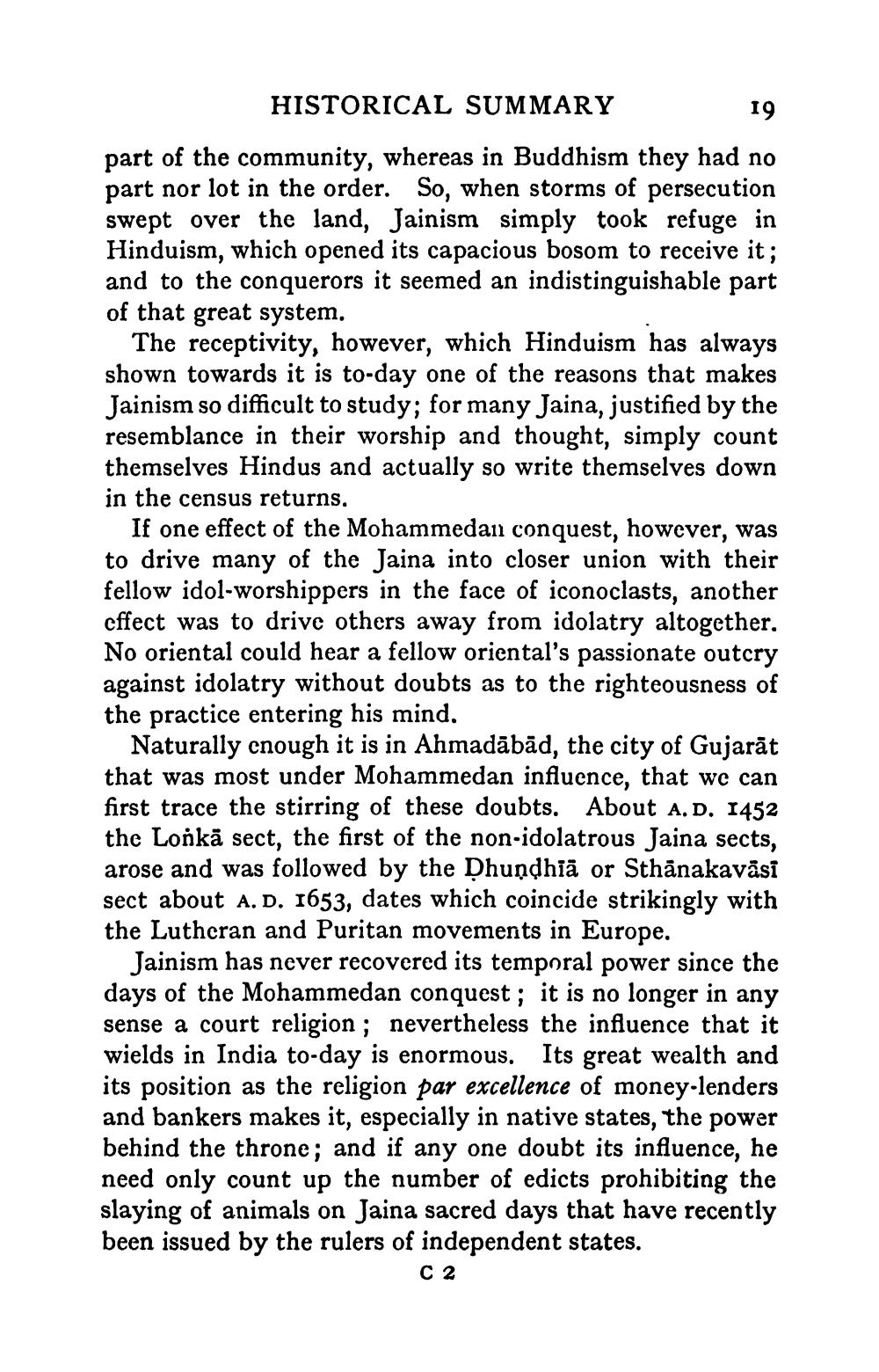________________
19
HISTORICAL SUMMARY part of the community, whereas in Buddhism they had no part nor lot in the order. So, when storms of persecution swept over the land, Jainism simply took refuge in Hinduism, which opened its capacious bosom to receive it; and to the conquerors it seemed an indistinguishable part of that great system.
The receptivity, however, which Hinduism has always shown towards it is to-day one of the reasons that makes Jainism so difficult to study; for many Jaina, justified by the resemblance in their worship and thought, simply count themselves Hindus and actually so write themselves down in the census returns.
If one effect of the Mohammedan conquest, however, was to drive many of the Jaina into closer union with their fellow idol-worshippers in the face of iconoclasts, another effect was to drive others away from idolatry altogether, No oriental could hear a fellow oriental's passionate outcry against idolatry without doubts as to the righteousness of the practice entering his mind.
Naturally cnough it is in Ahmadābād, the city of Gujarāt that was most under Mohammedan influence, that we can first trace the stirring of these doubts. About A.D. 1452 the Lonkä sect, the first of the non-idolatrous Jaina sects, arose and was followed by the Dhundhiä or Sthānakaväsi sect about A. D. 1653, dates which coincide strikingly with the Luthcran and Puritan movements in Europe.
Jainism has never recovered its temporal power since the days of the Mohammedan conquest; it is no longer in any sense a court religion; nevertheless the influence that it wields in India to-day is enormous. Its great wealth and its position as the religion par excellence of money.lenders and bankers makes it, especially in native states, the power behind the throne; and if any one doubt its influence, he need only count up the number of edicts prohibiting the slaying of animals on Jaina sacred days that have recently been issued by the rulers of independent states.
C
2




